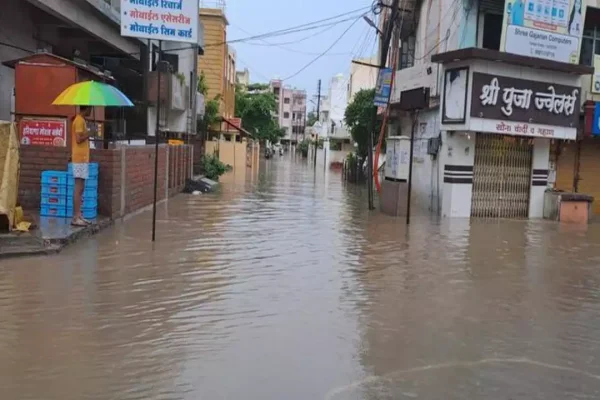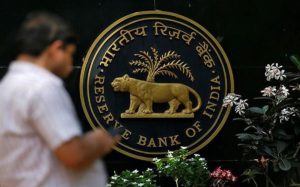
Nagpur: In the wake of unprecedented rains on September 23, which led to widespread flooding and the submergence of nearly 20,000 houses in Nagpur, the flood-affected residents have voiced their grievances and demands in a letter addressed to Chief Minister Eknath Shinde and Deputy Chief Minister Devendra Fadnavis.
The letter underscores the urgent need to hold government officials accountable for negligence that resulted in the water-logging and overflow of Ambazari Lake, while also urging for increased compensation for the affected families.
The letter also mentioned raising the ex-gratia payment of compensation to flood affected residents from Rs 10,000 to Rs 5 lakh per family. The residents also urged the State Government to order a judicial enquiry by a committee of three sitting High Court Judges for fact finding and fixing responsibility on government officials who have failed in their duties to protect, preserve, rejuvenate Ambazari Lake, Dam and Nag River even after getting a sanction of Rs 2,117 crore from the Central Government.
The residents’ grievances stem from the overflow of Ambazari Lake, which inundated a large part of Nagpur city. Despite the Central Government sanctioning a substantial budget of Rs 2,117 crore for the protection, preservation, and rejuvenation of Ambazari Lake, Dam, and Nag River, the disaster occurred, raising concerns about the utilization of these funds and the efficiency of the officials responsible.
The catastrophic flood event of September 23, 2023, has left many residents traumatized and facing severe economic and emotional hardships. The demand for accountability and increased compensation reflects their determination to seek justice and relief in the aftermath of this disaster.
In their letter, the affected citizens expressed their pain and helplessness to the government. The failure to maintain the ‘outflow’ of the water through Nag River caused the flood. The water logging in residential areas like Purohit Layout, Ambazari Layout, Kasturba Layout, Samata Layout, Yashwant Nagar, Daga Layout, Corporation Colony, Dandige Layout, Shankar Nagar and several other areas happened not because of the rains but the flow of water that came through Nag River.
The flow of that water was such that it wreaked havoc among the residents who were left helpless after the incident. The unusual water logging for ten hours from 4 am to 2 pm on September 23 resulted in huge monetary loss to the citizens. After the flood the people had no choice but to watch their furniture, fridge, washing machine, clothes, valuables, food grains in the house get submerged under flood water. The situation was so horrible that citizens were made to suffer without electricity, drinking water and without food for almost 24 hours.
The flood that day claimed four lives and left thousands shocked to see their valuable goods being destroyed in water logging in their houses, offices and shops. In the letter the victims pointed out the inaction of the local administration which caused huge damage to private properties. It said, “The local administration has failed to clean and maintain Nag River before the monsoon and due to which the flood took place.”
It also mentioned about failure to utilise the Central Government’s fund of Rs 2,117 crore for Ambazari Lake and Nag River rejuvenation project. Illegal construction of a concrete wall of eight feet in height and hundred feet in length by Maha Metro on the Nag River within 100 metres from Ambazari Dam which is a no construction zone.
The citizens also raised the issue of illegal construction of Vivekanand Memorial within 50 metres of Ambazari overflow point by Nagpur Municipal Corporation (NMC) which is also a no construction zone, resulting in big obstacles to smooth water flow from Ambazari overflow point. The affected citizens also raised the demand to conduct immediate structural audit of Ambazari Lake and Nag River to check the condition of the water bodies and also to mitigate future such incidences during monsoon. They also urged to shift the Vivekanand Memorial from the overflow point for smooth flowing of water of the lake.
















